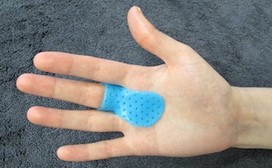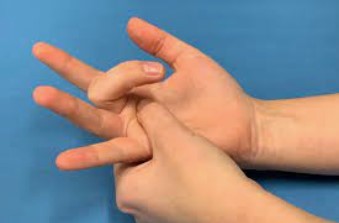Trigger Finger
Trigger finger is almost exactly as its name – the affected finger “triggers”, locks or catches. Whenever that happens, there’s usually a discomfort or pain, but most often, it just feels weird to the patient who sees and experience it.
It is a very, very, very common condition.
It was discovered in 1850 where a lot of soldiers who fire firearms (such as pistols), which led it to be named “trigger” finger, because it tends to affect the trigger finger (index finger) and it happens a lot then due to use to pull the trigger on the firearm.
Of course, trigger finger can affect any other finger such as thumbs (very commonly affected as well).
The main mechanism is that tendon sheath of the trigger finger is too narrow for the flexor tendon (usually at the level of the A1 pulley.)
Contents
Who are at risk of getting trigger finger?
- manual workers who use their hands a lot to carry, lift and manage items or loads
- people who has specific diseases such as diabetes, kidney issues, thyroid disease or other inflammatory disease
- pregnant ladies
Ladies tends to be more affected than men, and that being said, it tends to affect people in their later years of their lives at age 50s and 60s.
Common signs and symptoms
- Stage 1: In the early stage, usually there is no catching, just very localized tenderness and some swelling at the palm side of the base of the fingers (this is called the metacarpal phalangeal joint; the palm side of the knuckle).
- Stage 2: As it worsens, the pain becomes more frequent, and then patients start to experience mild clicks, triggering. At this stage, the patient can “unclick” the triggered finger easily.
- Stage 3: Here, the triggering is more severe where the patient will need to use the unaffected hand to unlock the triggered/locked joint. Normally there is less pain here, only more inconveniences.
- Stage 4: Very hard to unlock the locked joint; if patient reaches this stage, will likely need to have an injection of a trigger finger release surgery.
Causes
Other than being caused or aggravated by diseases or being pregnant; the cause tends to be pretty straightforward:
- repetitive strain injury due to repeated trauma and/or
- direct impact or trauma such as a fall or being hit by a specific force
We’ve had patients falling on their hand and subsequently developing trigger finger.
Diagnosis
Most of the time, doctors can diagnose based on history and physical examination.
Patients can have one or more active trigger finger at the same time (the most common being index, then thumb, then middle or ring finger). There is little need for xrays or MRIs done for trigger finger diagnosis.
Treatment
In most cases of trigger finger, non-surgery (conservative) approach works, especially with hand therapy or hand physiotherapy interventions such as

- anti-trigger finger splinting
- heat therapy
- gradual mobilization (protective first, then as ready, increasing difficulty)
- ultrasound therapy
- lifestyle / activity changes
- ergonomic adaptation and changes
Usually within 4-12 sessions of hand therapy will suffice or shorter.
If that doesn’t work, then escalation to corticosteroid injection or release surgery.
Where To Next?
- Go to Home / Start
- Learn and find out more about your pains (bones, muscles, joints, tendons, ligaments, nerves etc) at Pain Conditions & Injuries
- Visit our shop to see products we recommend for pain relief, heating, treatments and more
- Contact us





